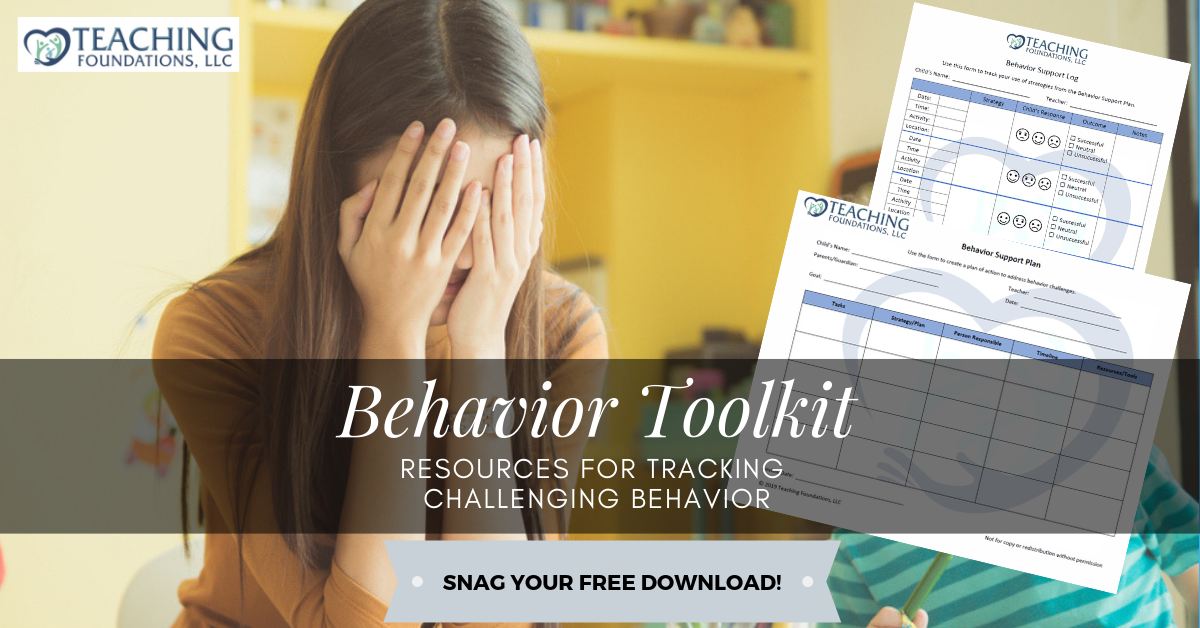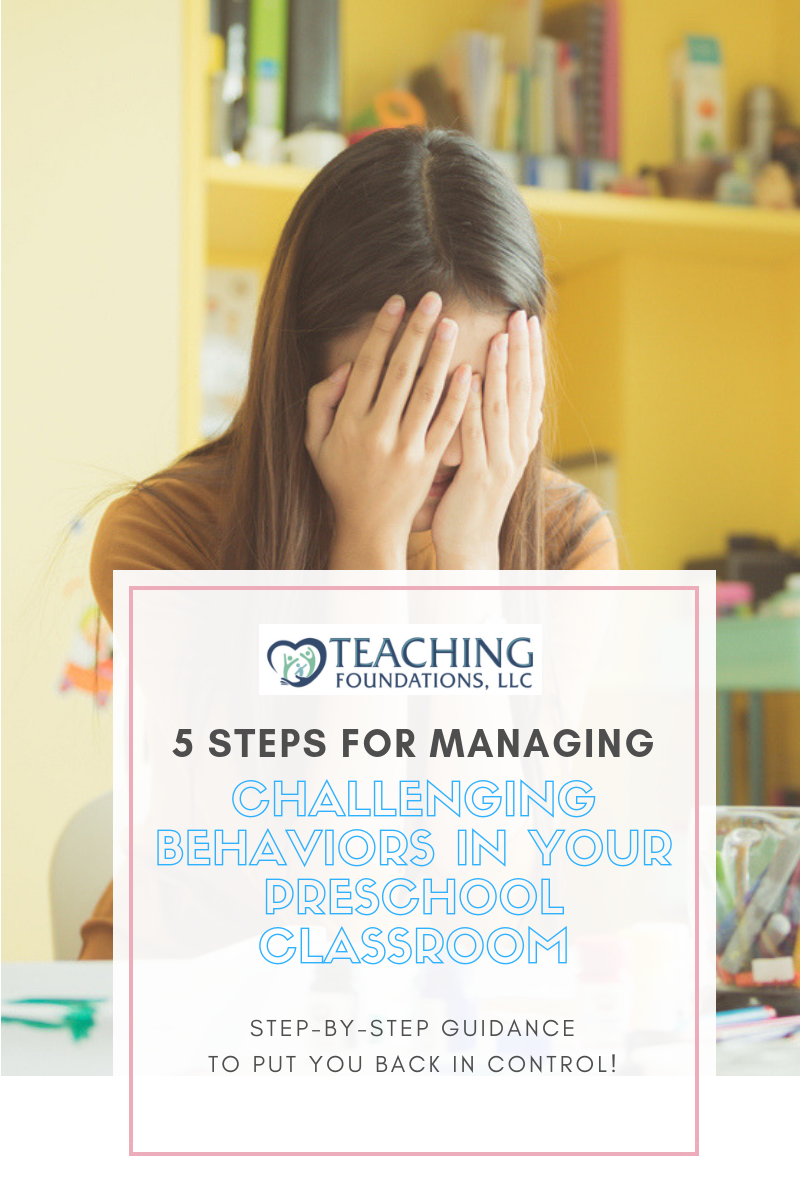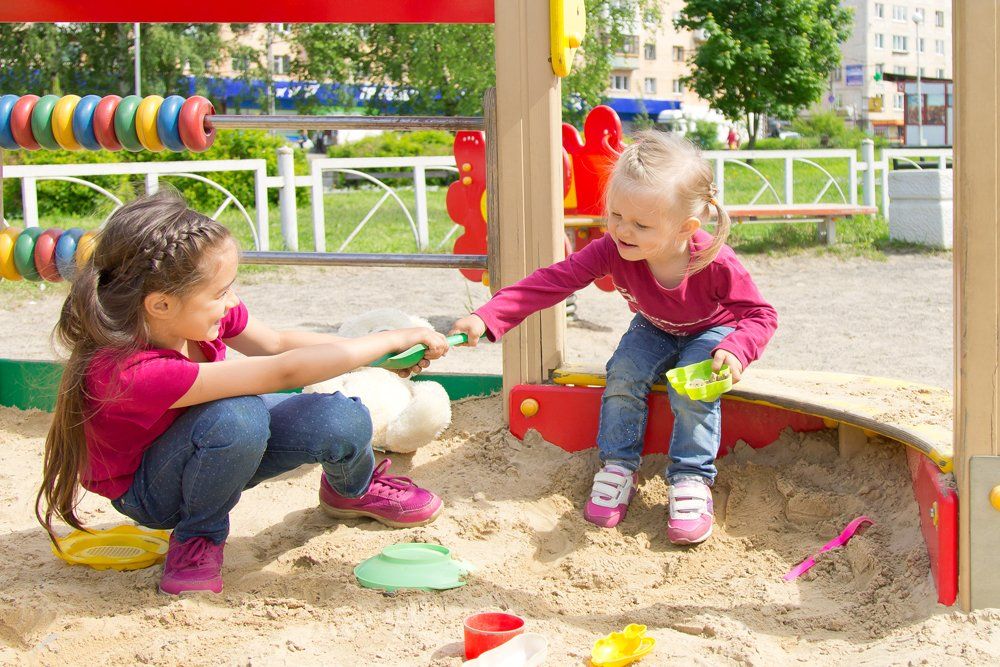Why Tracking Challenging Behaviors is the MOST Important Thing You Will Do
Do you struggle with finding ways to support the children with challenging behaviors in your classroom? I had one child who I struggled with finding ways to support. I still remember him all these years later. There were times when he would hit another child for what appeared to be no reason. Other times, he would disrupt group time. Circle time became the time of day I dreaded because I knew I did not want to deal with his behaviors. I would spend many afternoons talking with his mom about the behaviors that had occurred that day. We were both at a lost for what to do to get him to follow my classroom routines.
My struggles with addressing this behavior challenge led to many sleepless nights. I would spend hours online looking for solutions. Then, I would create the charts or memorize the techniques I found. I would go into the classroom the next day ready to use them only to find out they did not work and, sometimes, made his behavior worse.
I was frustrated. The only thing I wanted was to find something that worked. At times, I felt doomed for failure.
Does this sound like you? Are you struggling with a child and wondering what will work for you?
I now know that I had one fatal flaw in my approach to addressing the behavior challenges in my classroom. I did not take the time to ask “Why” he was behaving as he did. I did not take the time to track his behavior so that I could find strategies that matched the reasons driving his behaviors. If I had done this, I could have saved myself a great deal of time and frustration.
Benefits of Tracking Behavior
You have probably heard this phrase before: ALL Behavior is Communication. This means that children's behaviors send us hidden messages about their needs and wants. It becomes our job as preschool teachers to decode the hidden messages in children’s behaviors.
I know what you’re thinking:
“How do I decode the hidden messages when I am not a behavior specialist?”
My answer: “Tracking behavior is how.”
By tracking challenging behaviors, you can begin to uncover the hidden messages. Uncovering the hidden messages allows you to understand "why" the child is behaving as they do. There are many reasons "why" a child may hit another child. These reasons include:
- frustration
- the other child took something they wanted
- swinging their arms to close to the other child
- unable to express their feelings with words
- trying to get the other child to play with them, among others.
With all that is going on in your classroom, it can be hard to know the exact reason driving the behavior you are seeing. By tracking the behavior, you will find clues that help you begin to identify the reasons behind the specific behaviors in your classroom. Once you know the reasons, you will no longer need to pick random strategies and hope they work. You can now target your strategies and tools to the reasons driving the specific behaviors you are experiencing. This will also increase your chances of success because you will know the times and places to best use the strategies.
In short, you will be able to create a more tailored behavior support plan that meets the individual needs of the child with challenging behaviors.
Behavior Tracking Forms
The forms you use to track challenging behaviors depend on the information you need to know about the behavior. Our Behavior Brainstorming Form is great for reflecting on a child's strengths and interests, identifying the challenging behaviors you need to address, and listing questions you have about the behavior. After you have this information, you can decide which tracking forms are best to answer your questions about the challenging behavior.
Download our Behavior Brainstorming Form now so you can start creating your behavior tracking plan today.
Do you want help with tracking behavior?
Join our Behavior Detective Squad Facebook Group. This group is filled with early childhood educators who are working to conquer challenging behaviors together. In the group, you can share your insights from the Behavior Brainstorming Form and ask for strategies and best practices when creating a plan to track behavior and uncover the reasons driving the challenging behaviors in your classroom. Join the group by clicking here.
The three forms I frequently use to track challenging behaviors are ABC Charts, Frequency Charts, and Anecdotal Records. While these three forms each provide us with different information about challenging behaviors, they also compliment each other, as well. My go to form when tracking challenging behaviors is the ABC chart. The ABC chart records what is happening in your room when a challenging behavior occurs. To complete the ABC chart, you will note what happened before the behavior occurred (the Antecedent), the specific challenging behavior (the Behavior), and what happened after the behavior occurred (the Consequence). When you use this form to track a behavior over time (at least two weeks), you will begin to notice patterns in the behavior. The behavior may frequently occur after the same events. For example,
- someone entering their space
- clean up time
- nap time
- with a specific person
You may also notice the behavior is frequently followed by the same events. For example,
- teacher interaction
- not having to clean up
- leaving the classroom
- getting toys from another child
- going home
These behavior patterns will tell you what is causing the behavior (the antecedent) and what the reward is for the child (the consequences). Knowing these two pieces of information can help you plan when to use the strategies you find for the challenging behavior and what skills you need to teach the child to use instead of the challenging behavior.
Powerful information, right?
The ABC chart is the beginning of targeting your strategies to the reasons driving the behavior. I have been able to make behavior support plans just from the information I learned from the ABC chart.
Download our Behavior Toolkit to get started tracking today!
What Behavior Tracking Tells You
When you track challenging behaviors, you learn about the child. Many teachers think they are learning about the behavior when tracking challenging behaviors, but you are actually learning about what the child needs to be able to successfully meet your classroom expectations. Isn't that amazing? The very thing we all want - for the behavior to STOP and for the child to FOLLOW our classroom routines - relies on us understanding the child and what motivates them. Tracking behavior is the KEY to learning what you need to do to reduce the challenging behaviors in your classroom.
I know what you're asking, "What am I looking for when tracking behavior?" There are 4 main reasons driving most challenging behaviors:
- To get something they want (tangible)
- To get out of something (avoidance)
- To get attention (aka connection)
- Sensory/Stimulation (either more or less)
These are the rewards we discussed earlier that you will find in the behavior patterns revealed by ABC charts. Knowing which reward is driving the behavior allows you to plan strategies and begin to teach the child skills to get what they need in socially appropriate ways.
From our earlier behavior example, I learned that I needed to be close by when he was sharing materials with others (the Antecedent) because he was hitting when someone took his toy. This allowed me to give him the words (that’s mine) to use to ask for his toy back instead of hitting. When he was able to frequently get the toy back by saying “That’s mine”, the more he used words instead of hitting to get what he wanted. This behavior change did not happen immediately, but with consistency, we were able to “teach” him how to ask for what he wanted. However, I would not have known I needed to do this without tracking his behavior first.
Finding Time to Track Behaviors
As teachers we have many responsibilities: lesson plans, progress reports, running our classrooms, talking to families, cleaning responsibilities, etc. Finding time to track behavior can be difficult and feel overwhelming considering everything else we have to do.
I have always tried to find ways to include behavior tracking into my normal classroom rhythms and routines. The ABC chart, included in our Behavior Toolkit, can be kept on your clipboard with your daily attendance sheet. When a behavior happens, you can note the time and the behavior so it’s tracked. Later, you can write the details about what happened before and after the behavior when you have time. I usually complete the frequency chart based on incidents logged on the ABC chart.
Another strategy is to keep sticky notes near you and quickly jot down necessary behavior details (time, behavior, location, etc). These sticky notes can be added to behavior tracking forms later at the end of the day or during naptime.
The most important thing is to have a PLAN to track the behavior. You are only going to track a specific behavior based on your reflections from the Behavior Brainstorming form mentioned earlier. So, you only need to keep notes on the specific behavior you are targeting for behavior support.
When possible, use a team approach to behavior tracking. I have left anecdotal records on observation charts in different areas of my classroom. This allows anyone working in my room to quickly jot down notes about behaviors they observe for me to add to the tracking forms later in the day. Administration can also assist with this process. They can come to your classroom and observe at times when the behavior is likely to occur. They can also collect notes and anecdotal records from the teachers and complete the ABC charts and frequency logs for discussions with teachers and families during behavior support meetings.
The best thing is to create a plan of action – who will document what and when? Next, make copies of the behavior tracking forms available to anyone assisting with behavior tracking. The sooner you track the behavior, the more likely you are to identify the reasons for the behavior. This will allow you to make a behavior support plan that targets the child’s unique needs and begin to teach missing social skills. Once that happens, you can return to your daily routines and responsibilities confident you have a behavior plan that will WORK!
Do you want support learning how to track behaviors? Have you heard about tracking behavior before but do not know where to start? Then, our Challenging Behavior Village Facebook Group is just what you need. What are you waiting for? Join today to receive support, coaching, and encouragement from other early childhood professionals committed to conquering challenging behaviors. Join us here!
Do you have a process for addressing challenging behaviors in your early childhood program? Our live, instructor-led virtual training, Breaking the Behavior Code: Discovering the "Why" Behind Challenging Behaviors will teach you our 5-step process. Sessions running in September and October.
















